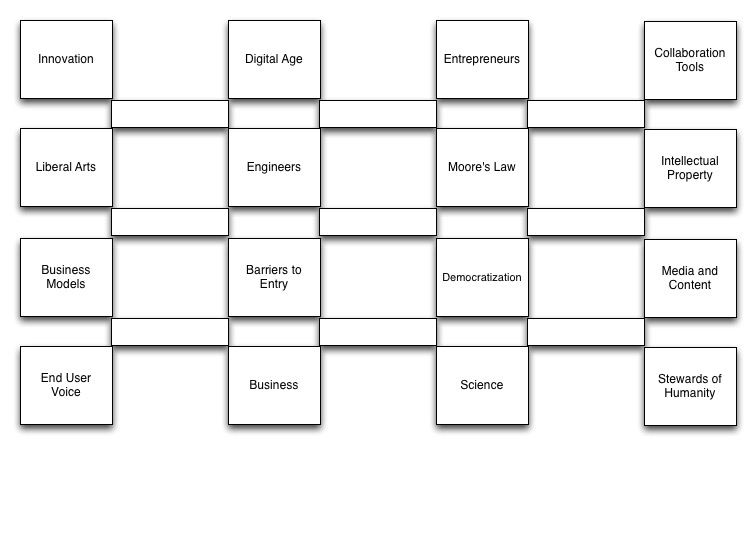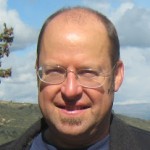Of course, from my perspective, as an innovation guy, whatever situation is being faced, innovation is what you need to succeed in solving the problem. So much has been written about success and problem solving, that I am almost reluctant, but not quite, to throw a reframing of thoughts into the mix. Below is a personalized view of what is needed for success from an involuntary innovators perspective.
There are multiple schools of thought attempting to address why some people succeed when others do not. Although many do not survive rigorous scrutiny, they are worth reviewing before debunking. First the 10,000 hour rule popularized most recently by Malcolm Gladwell, a terrific and accessible writer who sometimes has his words taken out of context by others. Gladwell’s excellent book Outliers, restates and references Dr. K. Anders Ericsson’s work. Some have diluted this work to simply state if you invest 10,000 hours you can be great at anything. This is clearly not true and is not what either Gladwell or Ericsson have stated. Putting in a lot of time is necessary but not sufficient.
This brings up the second popular school of thought that most unconsciously subscribe to, which blames or attributes success primarily to talent. Although individuals can be more or less gifted at various activities talent, genetic underpinnings have not been discovered. It is clear though that making progress is easier for some people than others, permitting them to progress more rapidly up the learning curve toward skill. Skill, however is not excellence or transcendent success. It takes a great deal of effort to get from talent to skill (perhaps the 10,000 hours?) but it also takes a great deal of effort (often more) to progress from skill to excellence. This tends to imply that success may depend more upon investment of effort, than talent although some gifted or talented people do progress relatively more rapidly than those lacking it.
The third large school requiring a deeper look is the roles of generalized intelligence for leaders or coordination for athletes. It is widely assumed that great leaders have off the chart intelligence and great athletes have off the charts coordination or strength or some physical advantage. Many great leaders did not exhibit any greatness early on.
Therefore, unfortunately it appears than neither time, talent, inherited intelligence or physical prowess are good predictors of success. Certainly they all help. who simply are “more”. Being more, which is different than having is also not a good predictor of success.
When we are not succeeding, and try to blame it on not having “more” time, talent, intelligence or coordination, this is simply an excuse to get us off the hook of not accomplishing as much as we think we want to, or should be.
I feel there is a not-so-secret weapon than can usually be applied. And that is conscious context management. All individuals have an enormous number of inputs impinging upon our systems. The universe we live in is so vast, of such great dimension and so dynamic as to literally be bombarding us with infinity all of the time. We can not step into the same universe two days or even moments in a row, and are therefore constantly involved in the dance of adapting and coping with something too gigantic too cope with, unless we find ways to shrink what we have to be paying attention to.
By the way, those gifted individuals with “more” sensitivity, awareness or intelligence can also have a “more” difficult time dealing with reality, because they sometimes attempt to process far “more” of what is happening than those who have found suitable blinders to limit what they have to cope with. For those who are fortunate enough to know what they want to be while they are still children, to enter single profession, to have a single life partner relationship and to live in a single physical locale, life can be less overwhelming than for those who can not assume any of these focusing blinders. Those who change careers, partners, living situations, locations and more can be investing huge amounts of energy processing variables all of the time.
I am not making a value judgement here, saying it is better to live in a larger, smaller, more variable or more fixed world. I am offering an explanation for why neither time, talent or generalized superior genes can guarantee success.
This does not mean there is nothing that can radically increase ones odds of success, for there is. It has had many names and descriptions over time. Napoleon Hill calls it definiteness of purpose in Think and Grown Rich, a book resulting from interviewing Andrew Carnegie about success in 1908. Long before this, greek philosophers described knowing yourself as the critical highest priority to get anywhere. Numerous self help books over the ages derived from psychological research say it in multiple ways, which I will paraphrase here as clarity of intention. To my mind, these are all forms of context managment which are excellent coping mechanisms to deal with the infinite number of inputs each of us receive every second of every day.
There is no question that consciously managing which part of infinity, one should bother to respond to, can reduce distractions which can destroy an individuals ability to succeed. The magic bullet I am putting forth here, is that the ability to consciously manage ones context is more powerful than investing 10,000 hours and being born with specialized or generalized proclivities. We all know many talented brilliant individuals having a hard time of it, and we also all know individuals who seem far less gifted but far more successful than one would predict. These resource investments have to be purposeful and consciously supportive of specific goals.
This does not only apply to individuals but also to companies, countries and institutions. I would like to support this with three personal examples – two from business and one from academia.
I spent ten years at Bose Corporation form 1980 to 1990 during which it grew form roughly $30M per year to $1B per year in revenue. During this same time another excellent audio company, JBL grew from $120M to $220M per year of revenue. The comparison was very stark JBL less than doubled in the same time Bose grew by a factor of over 30. As an aside, I personally preferred the sound of JBL speakers to those we created at Bose during those years even though I was a loyal Bose employee. This mystery was worth pondering. I believe the reason was because the founder Amar G. Bose and the corporate culture he consciously and carefully created was far more conscious of the design process than JBL. It is not that the Bose engineers were better or that Amar Bose was more brilliant than Sidney Harmon, the founder of Harman Kardon the parent company which owned and directed JBL. Many of both companies employees knew and respected each other. I personally spent time with both Amar Bose and Sidney Harmon. The difference was Bose was a systems engineer with a passionate desire to understand and to communicate how audio systems worked, and that he developed a like minded culture tremendously focused on understanding through research precisely how and why each part of a system contributes to performance of a product. We quantified quality, and had a complex set of models to explain to the best of our knowledge, how all of the dimensions of the situation interacted. These included design, manufacturing, marketing, sales, economics, acoustics, signal processing and more. This was how Bose became worth more than the other several hundred audio companies in the world. We had a more clearly defined purpose and a set of models that were consciously shared.
I also spent several years as part of Apple Computer and it’s community where there too was a clear conscious intention. The goal was to Create Bicycles for the Mind as opposed to empowering IT managers, which the rest of the computer world was pursuing. The desire to empower individuals and do it in an emotionally relevant manner ultimately resulted in Apple being worth more than all of the computer companies in the world as well. Were the engineers smarter than all of the others? I do not think so. Off course this was a very select group, but so was HP,IBM, Intel and lots of other companies at the time. When Apple faltered and almost fell apart it was because the conscious model as manifested by the founder Steve Jobs was no longer being reinforced, because he had been fired (for cause by the way).
A third personal example, contrats two organizations founded over a century ago in California, where the superior conscious model tremendously outperformed the competition. This time I was part of a team which did not evolve to become one of the top centers of excellence in education in the world. Stanford University founded in 1895, and Cogswell Polytechnical College (where I was a dean) founded 1887 were both founded with roughly a $1M endowment but extremely different missions. Stanford was founded to create the highest grade of cultivation and enlargement of the mind; and Cogswell was founded to provide a technical education accessible to all boys and girls to create tomorrows workforce. They each achieved their mission! Some Cogswell graduates ended up working at NASA and many Stanford graduates ended up contributing to the apex of intellectual accomplishment. The difference in value of these two institutions today is so vast that one is known worldwide and the other only in Silicon Valley.
I personally spent close to twenty years working within these three cultures, which exemplify differences choices of clarity of intention taught me how powerful conscious models and contexts can be. It was not time, money, or talent that had the dominant impact. It was the founder provided context, continued by the culture which made the largest difference. This is a simplification but we do all face similar decisions every day and every moment. When we are choosing and reinforcing a conscious context, then we are less overwhelmed by choices or distractions, and increase our chances of success.
For this reason, I encourage creative innovative individuals, to consciously choose frameworks consistent with who they think they are underneath and who they want to be, because this can guide every moment from that point forward. Being a guided missile is much better than being an unguided missile for everyone involved, when trying to make it in the world.
In the summer of 2017, when this is being written, Elon Musk is manifesting in his three companies an interrelated clear conscious vision. Not necessarily precisely how he will get there, but where he wants to get. He is outperforming entities with vastly greater resources (time, money and talent) by having a superior conscious framework model and vision.
Do not rely upon talent, wealth and time to get you where you want to go. Know where you want to go and be obsessed enough with a vision, to filter out the infinite number of distractions impinging upon you at every moment. This can not guarantee success, but all other things being equal (like talent, time and resources), to my mind, it is a far better predictor of success.



